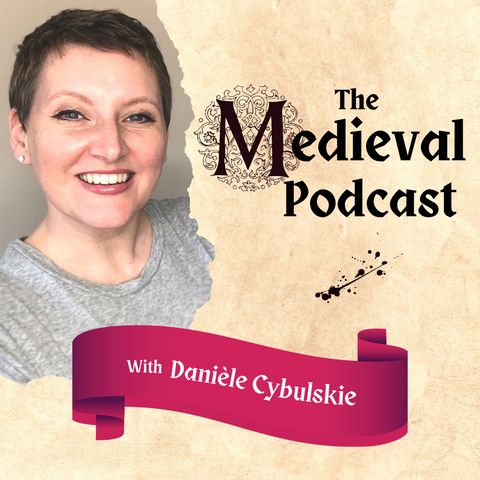A Beginner's Guide to Medieval Saints

Jan 26, 2023 ·
30m 37s
This week, Danièle (with the help of her new puppy) introduces some of the most popular saints of the Middle Ages, along with their iconography, so you can spot them...
show more
This week, Danièle (with the help of her new puppy) introduces some of the most popular saints of the Middle Ages, along with their iconography, so you can spot them in medieval art.
You can also support this podcast and Medievalists.net on Patreon: https://www.patreon.com/medievalists
show less
You can also support this podcast and Medievalists.net on Patreon: https://www.patreon.com/medievalists
Comments

Frank Herbert Jr.
1 year ago
As an Orthodox Christian, I found this podcast very interesting! Great job in describing for listeners! Your descriptions of icons and how they tie to faith are illuminating. Most, if not almost all, think that MIddle age Christianity was solely Roman Catholic. Folks need to remember that the faith, doctrine etc was one in Christendom until Chalremagne came along. This is where the idea of a Pope as the singular vicar between men and God, a concept that was (and still is) foreign and contrary to collegial understanding. This Papal concept really came off in the West as the headquarters of the Roman empire shifted East to Constantinople, and the West was a backwater of Christendom. In the West, beginning with, Charlemagne, the various bishops of the Latin church became landowners and political entities. The ones that went along with the Emperor were the ones that did his bidding, such as changes in the doctrine of the Trinity known as the Filioque, one of the other reasons that led to the split in 1054. So early saints are still venerated in the Orthodox faith (such as St Patrick, st Edward, St Brigid, St Calum, and huge ones like St Benedict, followers of which really saved intellectual material/pursuit etc etc. Only later ones, some of which you mentioned, came along after 1054 and are only venerated by the Roman Catholics. etc) AS is well understood, faith and Christianity playing a prominent role in life, this distiction between early Middle Age saints and latter ones and the resulting differences in faith play a huge role. One example is what we know as the "Latin Mass" and folks not understanding Latin (where the term Hocus Pocus comes from) came along a bit later. Canons of the Church stated (and are still observed in Orthodoxy) REQUIRE that the services be done in the language of the people. This is seen in Sts Methodius and Cyrill who, when preaching the Gospels to Rus, first worked on learning Slavic and giving Rus their own language. Only Post 1054 Schism did the Latin, Roman Catholic Church begin using solely Latin. Lastly, When Luther had begun his reformation, he communicated in depth with COnstantinople, even sending the Augsburg Confession to the Patriarch of Constantinople for input! He famously stated, "I stand with the Greeks (Orthodox)!" Unfortunately the Muslim occupation of the East and the Orthodox not willing to budge on Luther's doctrinal innovations put an end of Luther linking with the East.
Information
| Author | Medievalists.net |
| Website | - |
| Tags |
Copyright 2024 - Spreaker Inc. an iHeartMedia Company
